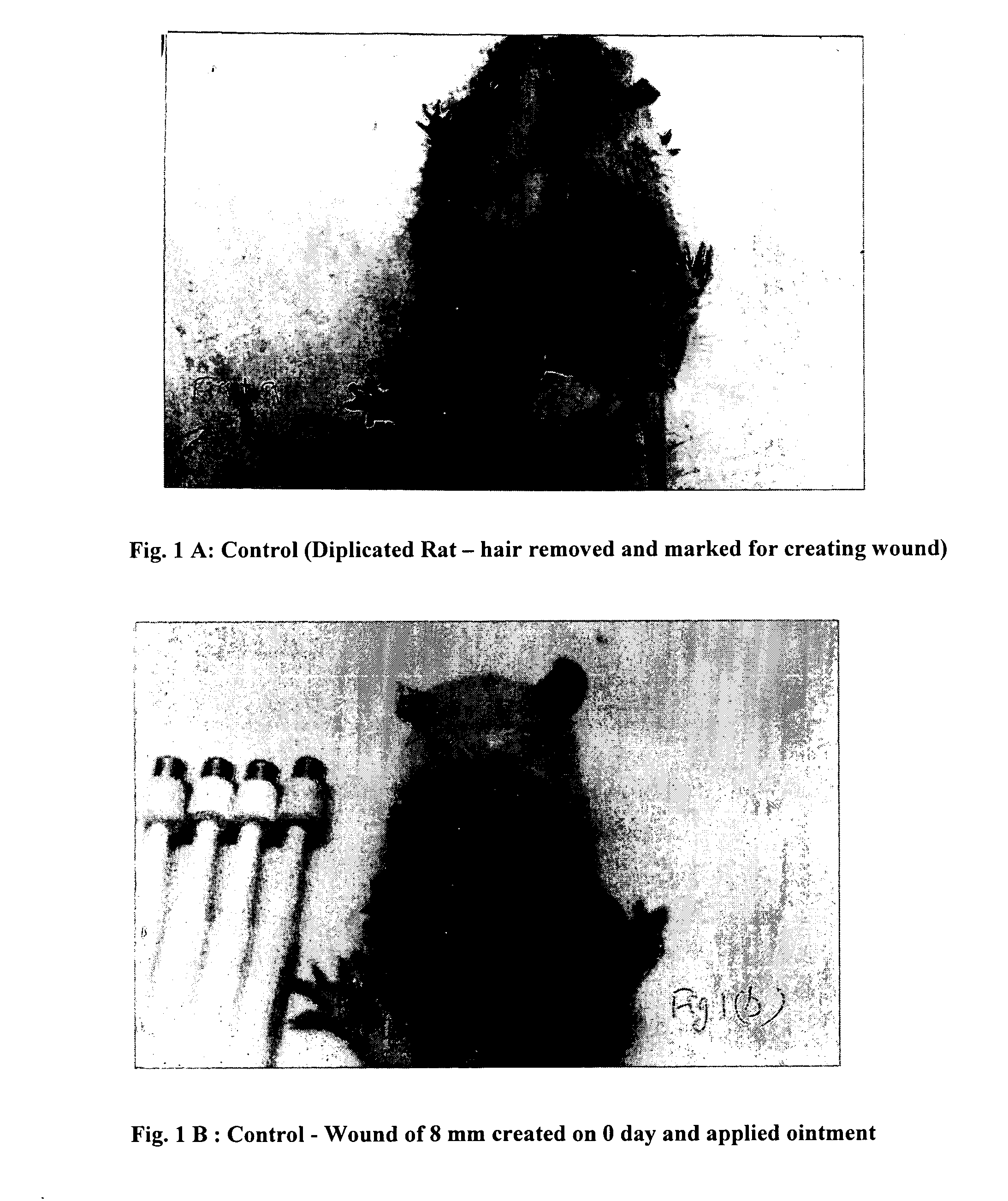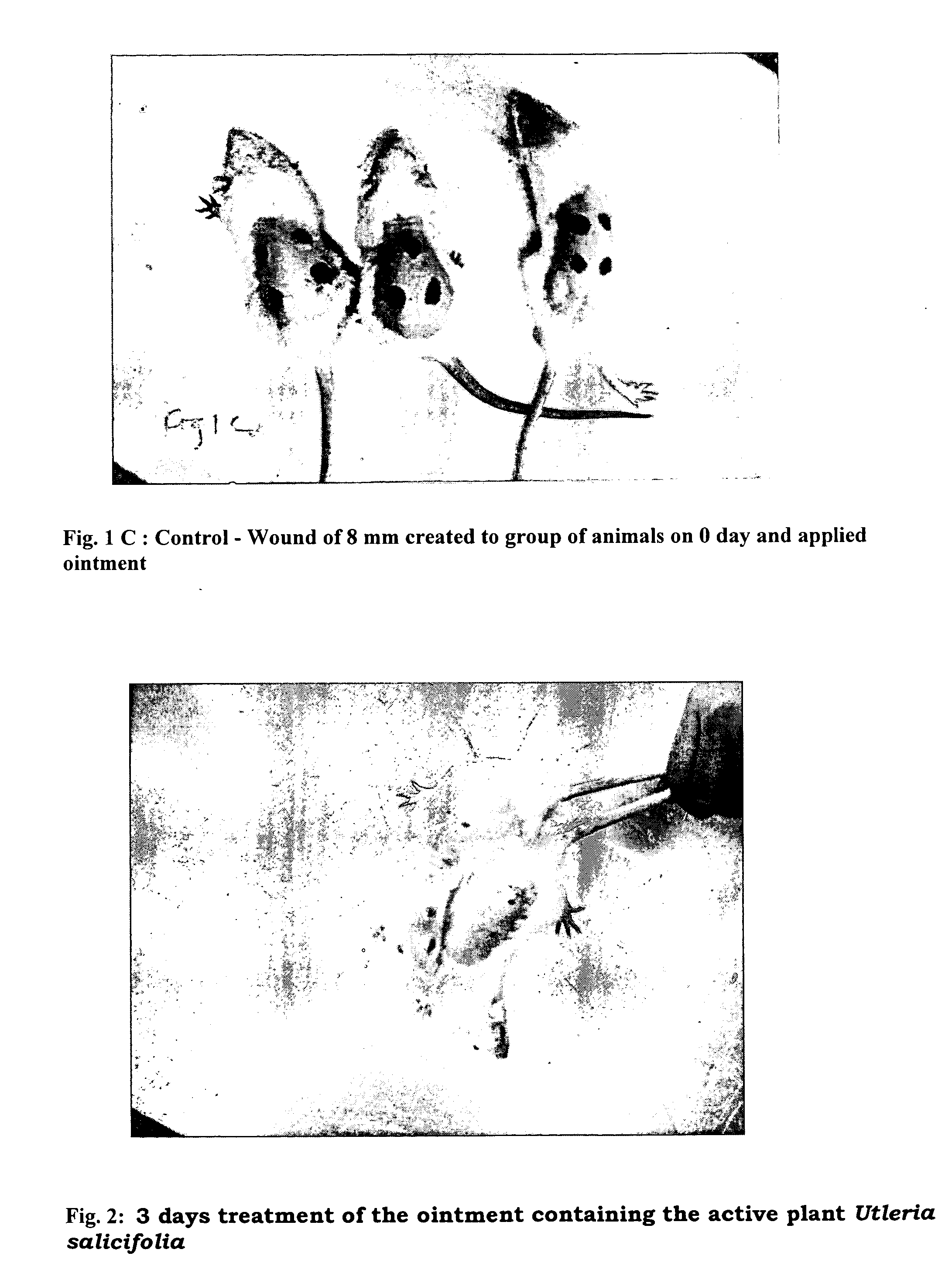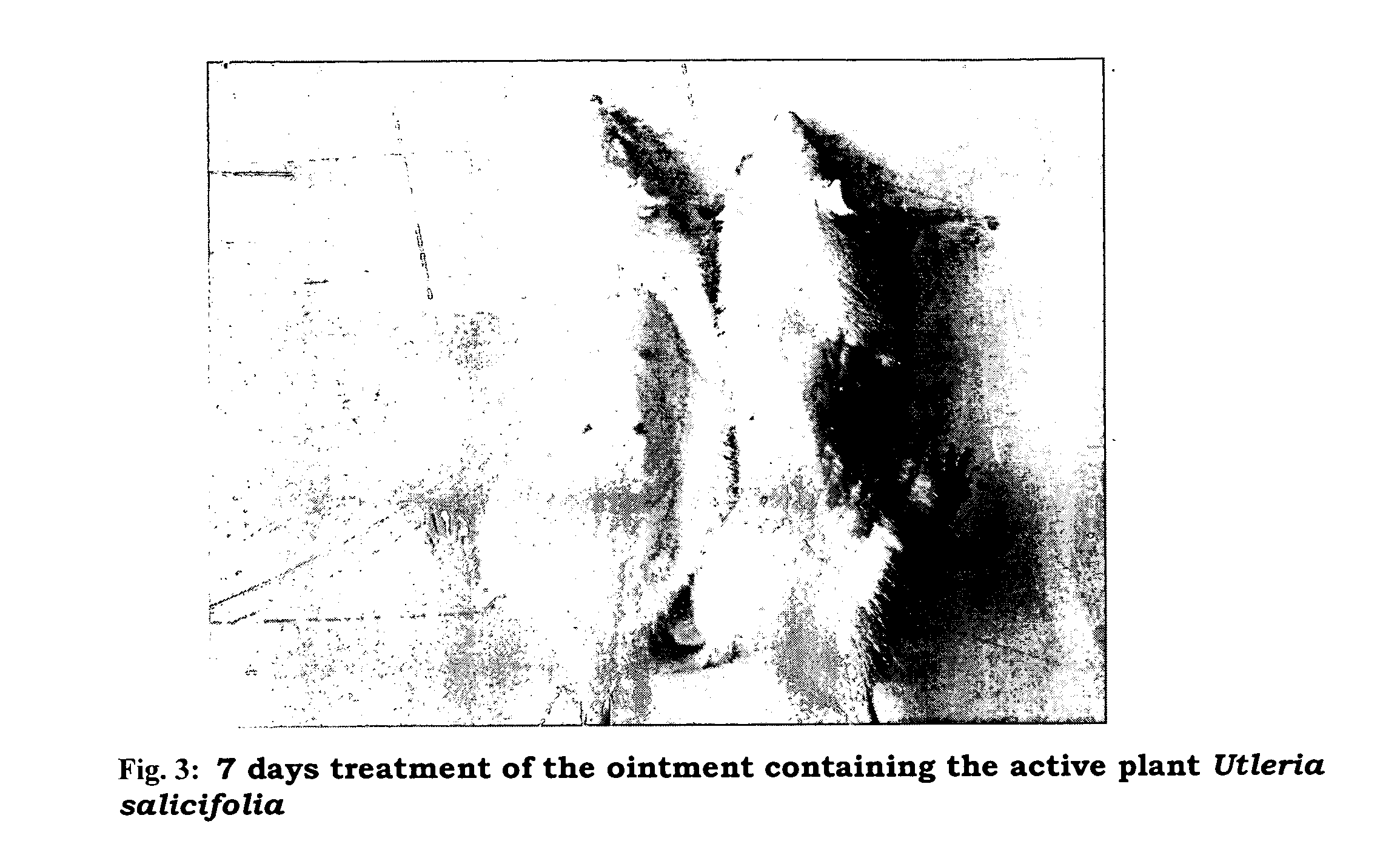Herbal composition for cuts, burns and wounds
a technology for burns and wounds, applied in the field of herbal compositions for cuts, burns and wounds, can solve the problems of prolonging the care and hospitalization time of patients, prolonging the time of hospitalization, and affecting the healing effect of chronic wounds
- Summary
- Abstract
- Description
- Claims
- Application Information
AI Technical Summary
Benefits of technology
Problems solved by technology
Method used
Image
Examples
example 2
[0053]
2 Jatropha curcas 2 wt. % Clerodendrum infortunatum 4 wt. % Centella asiatica 2 wt. % Utlaria solicifolia 2 wt. % White soft paraffin 32.0 g Bentonite 13.0 g Sodium laurylsulphate 0.5 g Purified water 65.0 Benzoic acid 0.1% Perfume q.s.
[0054] Jatropha curcas, Clerodendrum infortunatum Centella asiatica, Utlaria solicifolia, were collected and dried in shade. The dried material (1 Kg) is then powdered and extracted with 50% aqueous alcohol (3 L) for 5 days. At the end of this, the solvent is decanted and filtered if necessary to remove the plant debris. The extract is then concentrated under vacuum at less than 50.degree. C. Then the extract is lyophilised to obtain the extract in powder form. Dissolve the extracts in purified water and warm, add 0.5 gm Sodium Lauryl sulphate. Dissolved extract into bentonite and triturate for 20-30 min., then add white soft paraffin and triturate for 30-40 min. till clicking sound produced to form an ointment.
[0055] This composition is used as...
example 3
[0056]
3 Jatropha curcas 4 wt. % Clerodendrum infortunatum 5 wt. % Centella asiatica 3 wt. % White soft paraffin 32.0 g Bentonite 13.0 g Sodium laurylsulphate 0.5 g Purified water 65.0 Benzoic acid 0.1% Perfume q.s.
[0057] Jatropha curcas, Clerodendrum infortunatum Centella asiatica were collected and dried in shade. The dried material (1 Kg) is then powdered and extracted with 50% aqueous alcohol (3 L) for 5 days. At the end of this, the solvent is decanted and filtered if necessary to remove the plant debris. The extract is then concentrated under vacuum at less than 50.degree. C. Then the extract is lyophilised to obtain the extract in powder form. Dissolve the extracts in purified water and warm, add 0.5 gm Sodium Lauryl sulphate. Dissolved extract into bentonite and triturate for 20-30 min., then add white soft paraffin and triturate for 30-40 min. till clicking sound produced to form an ointment.
[0058] It is effective in cuts, wounds and burns.
example 4
[0059]
4 Jatropha curcas 3 wt. % Clerodendrum infortunatum 2.5 wt. % Centella asiatica 3.5 wt. % Utlaria solicifolia 0.5 wt. % White soft paraffin 32.0 g Bentonite 13.0 g Glycerine 10 ml Sodium laurylsulphate 0.5 g Purified water 65.0 Benzoic acid 0.1% Perfume q.s.
[0060] Jatropha curcas, Clerodendrum infortunatum Centella asiatica, Utlaria solicifolia, were collected and dried in shade. The dried material (1 Kg) is then powdered and extracted with 50% aqueous alcohol (3 L) for 5 days. At the end of this, the solvent is decanted and filtered if necessary to remove the plant debris. The extract is then concentrated under vacuum at less than 50.degree. C. Then the extract is lyophilised to obtain the extract in powder form. Dissolved the extract in water and warm, add 0.5 g SLS, bentonite and glycerine triturate together and add dissolved extracts and triturate for 15-20 min, then add white soft paraffin and triturate 3-40 min. till clicking sound produced to form an ointment.
[0061] It ...
PUM
 Login to View More
Login to View More Abstract
Description
Claims
Application Information
 Login to View More
Login to View More - R&D
- Intellectual Property
- Life Sciences
- Materials
- Tech Scout
- Unparalleled Data Quality
- Higher Quality Content
- 60% Fewer Hallucinations
Browse by: Latest US Patents, China's latest patents, Technical Efficacy Thesaurus, Application Domain, Technology Topic, Popular Technical Reports.
© 2025 PatSnap. All rights reserved.Legal|Privacy policy|Modern Slavery Act Transparency Statement|Sitemap|About US| Contact US: help@patsnap.com



